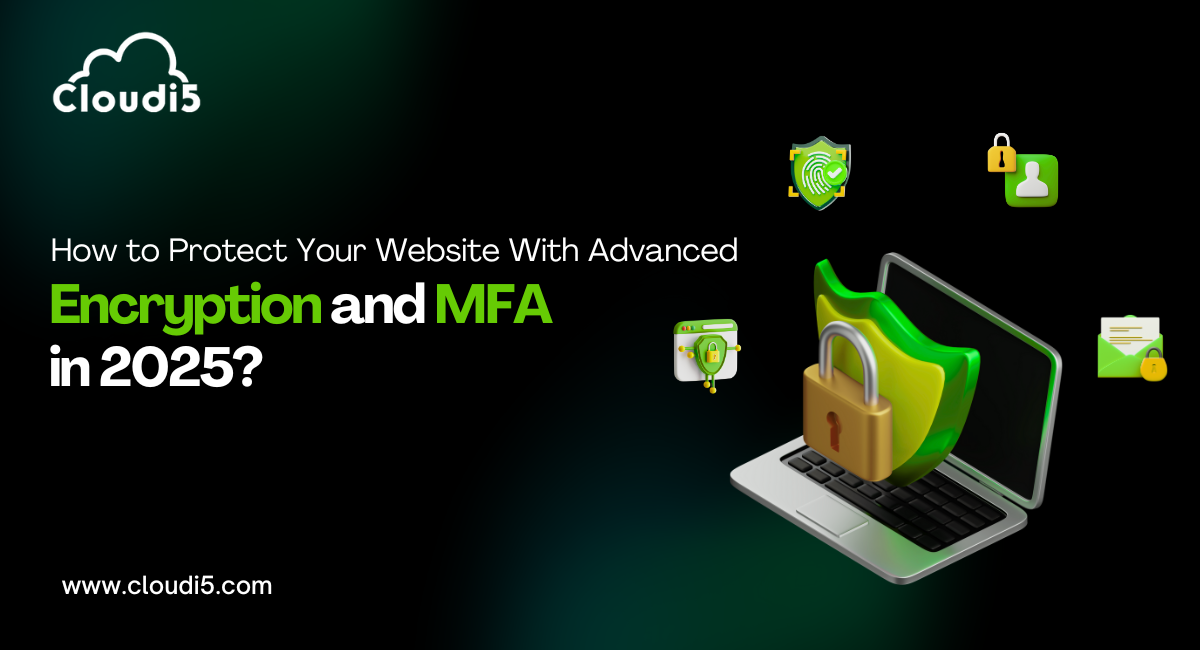
How To Protect Your Website With Advanced Encryption And MFA In 2025
In today’s cyber landscape, it’s no longer enough for websites to just work—they need to be secure by design. In 2025, where data breaches and identity theft are more sophisticated than ever, the best way to protect your site is with advanced encryption and multi-factor authentication (MFA). This guide will walk you through what these technologies are, why they matter now more than ever, and how to implement them effectively on modern websites.
1. Introduction to Website Security in 2025
1.1 Why Web Security Needs a 2025 Upgrade
Cyberattacks have evolved. With AI-powered hacking tools, phishing-as-a-service, and deepfake identity fraud on the rise, basic SSL and password protection are no longer enough. Users expect their data to be safe—and regulators demand it.
1.2 What This Guide Covers
We’ll explore how advanced encryption methods like TLS 1.3, post-quantum cryptography, and full-disk encryption can protect your site’s data, while MFA strategies like passkeys and biometric logins prevent unauthorized access—even if credentials are leaked.
2. Understanding Advanced Encryption
2.1 What Is Encryption?
Encryption converts readable data into code, so only authorized users can decode it. It protects data at rest (stored data) and in transit (when moving between servers or users).
2.2 TLS 1.3 and HTTPS Everywhere
In 2025, every website should be running on TLS 1.3, the latest version of Transport Layer Security. It’s faster, more secure, and supports forward secrecy—ensuring session data remains private even if keys are compromised later.
2.3 End-to-End and Zero Trust Encryption
-
End-to-End Encryption (E2EE): Ensures only the sender and recipient can read data.
-
Zero Trust: Treats every user, device, and connection as untrusted. Encryption is applied internally across APIs and services.
2.4 Post-Quantum Cryptography
Quantum computing is nearing practical use, threatening traditional RSA and ECC encryption. Algorithms like Kyber and Dilithium are designed to resist quantum attacks. Leading platforms are already testing PQC integration.
3. The Role of Multi-Factor Authentication (MFA)
3.1 What Is MFA?
MFA requires users to verify their identity using two or more factors:
-
Something they know (password)
-
Something they have (phone, hardware key)
-
Something they are (biometric data)
3.2 Passkeys and WebAuthn
Passkeys are FIDO2-based login credentials that replace passwords. They’re secure, phishing-resistant, and supported across all major browsers and devices.
3.3 Risk-Based and Adaptive MFA
Modern MFA solutions adapt to user behavior:
-
Challenge only when login patterns change
-
Use geolocation, device recognition, and time-of-day access patterns to adjust security prompts
3.4 Combating MFA Fatigue
New UI/UX design patterns limit “approval spam” from attackers by using number-matching or biometric scans to confirm each login attempt.
4. Implementation Tips for Developers
4.1 Integrate HTTPS and TLS 1.3
Use tools like Let’s Encrypt for free HTTPS certificates. Make sure your server stack supports the latest encryption protocols.
4.2 Add WebAuthn Support
Implement WebAuthn APIs using frameworks like Node.js, Django, or Laravel. Offer users a choice between traditional MFA and passkeys.
4.3 Secure Your Backend and APIs
Encrypt API traffic, enforce authentication tokens, and avoid storing sensitive information unless absolutely necessary. Use HSTS and Content Security Policies (CSP) for browser-level protections.
5. Tools and Services That Help
-
Cloudflare Zero Trust: Adds encryption and MFA to internal tools and external websites.
-
Auth0, Okta, Firebase Auth: Provide drop-in MFA and passkey support.
-
Let’s Encrypt, SSL Labs: Offer free SSL/TLS and testing for proper configuration.
-
Hotjar, Clarity: Monitor behavior to detect suspicious logins or abuse patterns.
6. Future of Encryption and MFA
6.1 AI-Powered Security Systems
AI now detects login anomalies, predicts threats, and reacts in real time. Security tools are integrating machine learning to block suspicious activity before users even notice.
6.2 Biometric and Behavior-Based MFA
Next-gen MFA may rely entirely on facial recognition, keystroke analysis, or even emotional detection. These methods are passive, seamless, and nearly impossible to spoof.
6.3 Quantum-Safe Protocols
In the next few years, expect industry-wide migrations to post-quantum standards. Staying ahead of this curve will be essential for financial and healthcare sectors.
7. Ethical Security: Build Trust, Not Walls
7.1 Avoid Overcomplicating UX
Security should be strong—but not frustrating. Design authentication flows that are secure and user-friendly.
7.2 Transparency and Privacy
Let users know what security measures are in place. Don’t collect more than you need. Always encrypt sensitive data—even if you “trust” your users.
Conclusion: Secure by Design
In 2025, website security isn't optional—it's foundational. By adopting advanced encryption and MFA, you're not just protecting data; you're building trust, improving user retention, and complying with ever-stricter regulations. The future is secure, seamless, and user-first—and it starts with the steps you take today.
If you're ready to upgrade your site’s defenses, Cloudi5 Technologies can help. We specialize in secure web design, using the latest encryption and authentication technologies to protect your business and your users
Trusted By












Leave Comments